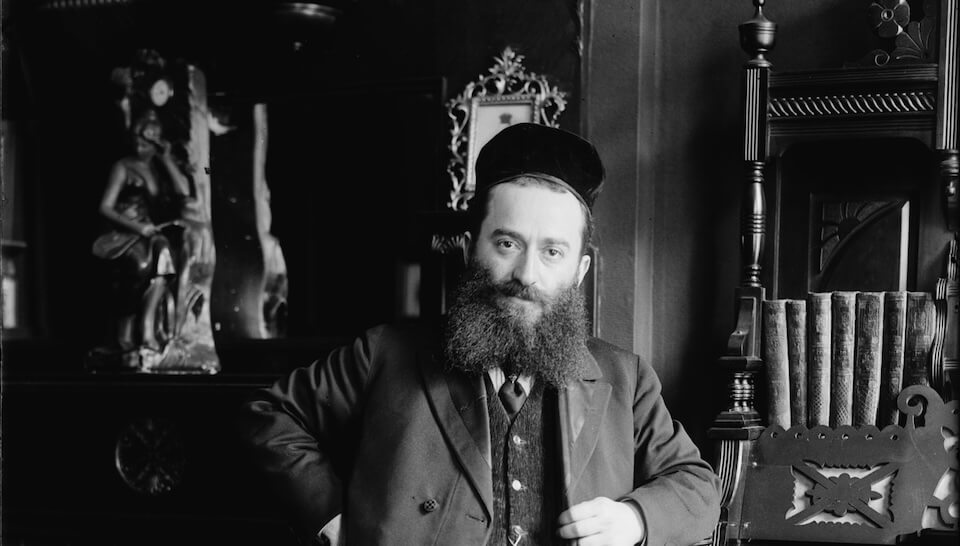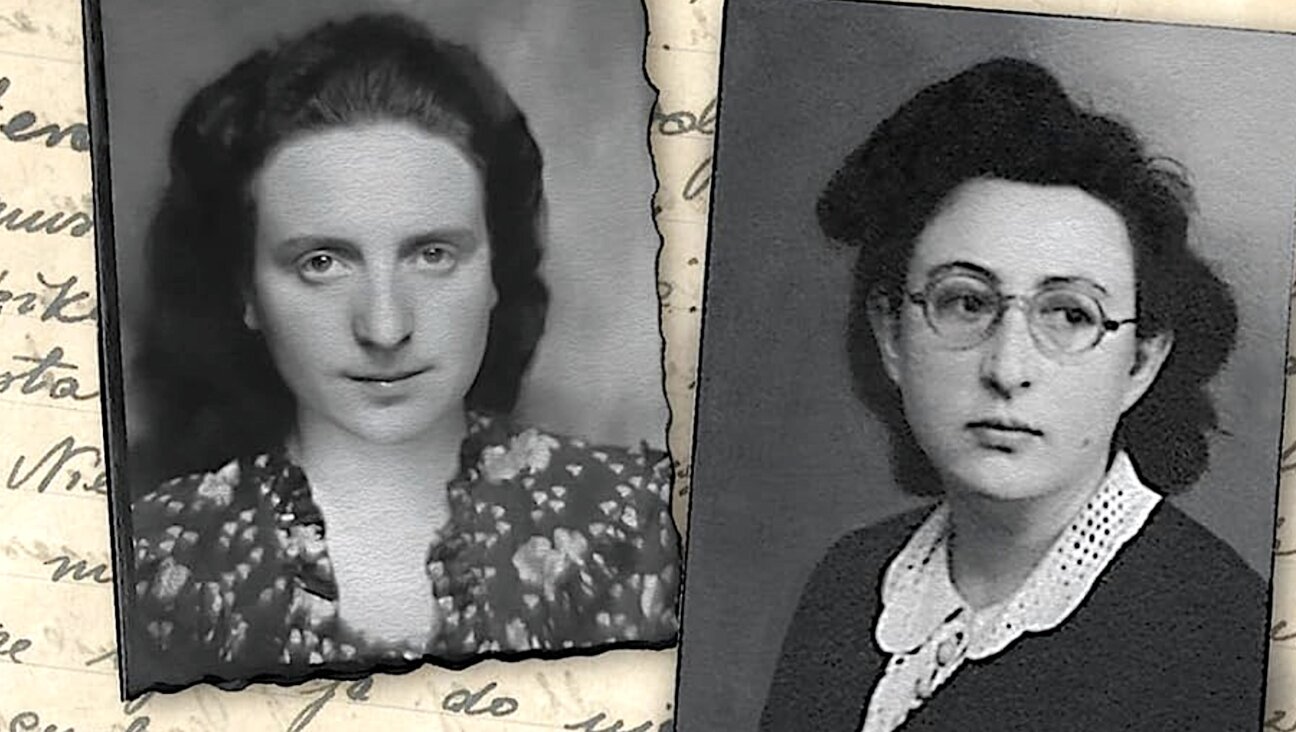Amidst coronavirus pandemic, YIVO looks to the digital future

Image by Getty Images
Read this article in Yiddish.
Like stores, museums and theaters, archives and specialized libraries have struggled to adapt in the face of social distancing due to the Covid-19 pandemic. With staff and scholars unable to access their holdings and the public unable to attend in-person programming, many institutions have found themselves in a state of suspended animation.
Not so for the YIVO Institute for Jewish Research, the venerable repository of Eastern European Jewish culture and history that operates out of the Center for Jewish History near Union Square. While library patrons can’t physically access YIVO’s 400,000 books or 23 million documents and artifacts, record numbers of people have been poring over YIVO’s digitized materials and taking its online classes.
Shortly after New York City shut down in mid-March, YIVO made access to its Shine Online Educational Series free. Since then, 12,000 people have enrolled in the courses, an increase of more than 220% over previous enrollment. During the same period, traffic to the institute’s website has risen by 250%.
“The skyrocketing of these numbers shows us that in a time of crisis people reach out for connection through their heritage,” said Shelly Freeman, YIVO’s Chief of Staff.
Ben Kaplan, YIVO’s director of education, noted that 9,200 people registered “just for our new food class ‘A Seat at the Table’. And not just from countries you’d expect, like the U.S., Israel and Poland but also Indonesia, Zimbabwe, Malaysia.”
“What this says is that this history that YIVO embodies is not just a little niche thing for a small group of diehard, fanatical Yiddishists,” said Jonathan Brent, YIVO’s executive director and CEO. “This is a big subject in Jewish life today around the world, something that is foundational, essential and very much alive.”
While YIVO has been working towards an increasingly digital future for years, Brent said that the current crisis has provided an opportunity to redouble efforts to make the institute’s holdings accessible to a wider audience. “In a typical year, 6,000 or 7,000 people walk through the door of the Center for Jewish History and access our materials,” he said. “Through this class alone, we have more than 9,000 people around the world.”
For YIVO, a particular challenge in moving resources online has been the high barrier to entry for appreciating its holdings.
“The Met can put a Picasso or Cézanne online and anyone looking at the paintings will get something from it,” Brent said. “But a 19th century handwritten Yiddish text has to be contextualized.”
Jon Richmond, a member of YIVO’s board of directors and director of the Shine Trust, which funds the Shine Educational Series, said that a key goal in designing the courses was making the work of the YIVO Institute accessible to the wider world.
“I don’t think that beyond the scholarly community people were generally aware of the work that YIVO’s been doing for nearly a century,” said Richmond. “These courses are so interesting because they make use of YIVO’s incredibly rich assets. For instance in the theater course” — titled “Oh Mama, I’m in Love! The Story of the Yiddish Stage” — “you see how the roots of so much of American popular culture is in Yiddish theater.”
The current epidemic is far from the worst crisis YIVO has faced. YIVO — yidisher visnshaftlekher institut or Yiddish Scientific Institute — founded in 1925 in Vilna, Poland, was the premiere center for the study of Eastern European Jewry and Yiddish language and culture during the interwar period. The organization established an unparalleled archive and library, collected folklore and ethnographic materials from throughout the Yiddish-speaking world, acted as a de-facto language regulator and published journals dedicated to Jewish history, economics, linguistics and psychology. YIVO also worked to educate the next generation of Jews, advising schools on Yiddish pedagogy, organizing essay and autobiography contests for Jewish youth and launching a graduate program for budding historians and linguists.
All of that came to a bloody end once Germany invaded the USSR in June 1941. YIVO’s building, outside of the confines of the Vilna ghetto, became the staging ground for the Paper Brigade, a group of Jewish intellectuals forced by the Nazis to sort through and dispose of the holdings of Jewish libraries. The ragtag group of archivists, writers, poets and future partisans risked their lives to hide tens of thousands of books and documents by sneaking them into the ghetto under the noses of SS officers. Beyond the material saved by the Paper Brigade, many of YIVO’s holdings were found after the war in Germany among millions of books and works of art looted by the Nazis. All together, scholars estimate that some 40% of YIVO’s prewar collection survived the Holocaust. The bulk of that material made its way to New York City, where YIVO’s local branch, headed by the organization’s surviving founder Max Weinreich, emerged as its de-facto world headquarters.
More than 250,000 other documents, however, remained hidden in a church in postwar Lithuania, where they were discovered after the fall of the USSR. After years of negotiations over ownership of the materials, in 2014 the Lithuanian government and YIVO agreed that the collections would remain on separate sides of the Atlantic but be reunited digitally via an online portal. Since then, an additional 170,000 documents have been uncovered, among them the handwritten autobiography of a 10-year-old girl named Beba Epstein. The booklet, submitted to YIVO as part of a contest for students in 1933, is the inspiration for an online exhibition about Vilna’s Yiddish day schools, part of an online museum that will be launched in stages starting next month.

Beba Epstein’s autobiography. Image by Getty Images
“Our archival objects fuel our courses and exhibitions,” said Kaplan, YIVO’s director of education. “It’s symbiotic. These objects give people a frame through which they can view history and our instructors use these digitized materials to create educational programing that opens up a window to a world that would otherwise be inaccessible.”
“We have a responsibility because we have documents that people risked their lives to save,” said Brent. “It’s our job, our duty really, to make this material available and accessible to the wider world.”
While the majority of YIVO’s efforts are dedicated to preserving the documental record of pre-war Eastern-European Jewry and educating the public about it, Brent and Kaplan noted that the modern YIVO, like its Vilna forbearer, places great emphasis on documenting contemporary Jewish life. As part of the cooking course “A Seat at the Table,” participants are encouraged to contribute their own family recipes and stories about Jewish food. YIVO’s staff will add their contributions to YIVO’s archives, where future scholars can explore how 21st century Jewish food reflects factors such as immigration, Americanization and acculturation.
“The course breaks through stereotypes and doesn’t let people dismiss this civilization as kitchy or irrelevant,” Kaplan said. “People are rediscovering how our foodways were seasonal and connected to the land, how immigrants adapted to their environment and how they lost and rediscovered culinary traditions. People are seeing that they’re part of that tradition and can contribute to its documentation.”






















